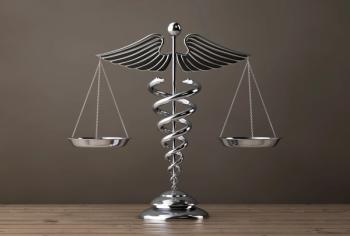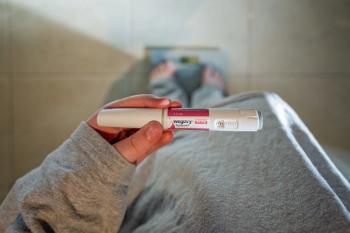
- Volume 75
- Issue 12
Blood Pressure Monitors: Choosing Wisely
Pharmacists are well-positioned to inform patients about the various types of blood pressure monitors currently available and ensure that they are counseled on the proper use of these devices.
Ms. Terrie is a clinical pharmacy writer based in Haymarket, Virginia.
An estimated 73.6 million individuals aged 20 years or older in the United States have hypertension.1 Among the patient population diagnosed with hypertension, only an estimated 69.1% are currently being treated, and only 45.4% of this patient population have their blood pressure (BP) under control. 1 Furthermore, an estimated 33% of individuals with elevated BP do not even know they have hypertension.1 Hypertension is often referred to as the “silent killer” because if left untreated or uncontrolled, elevated BP can lead to strokes, heart attacks, heart failure, renal failure, and increased risk of morbidity and mortality.2,3
Hypertension is associated with various risk factors that can be classified as modifiable or nonmodifiable (Table 1).4
Types of BP Monitors
Pharmacists are likely to encounter patients seeking guidance regarding the selection of BP monitors and advice on the proper use of these devices. Three types of BP monitors are currently available: mercury column, aneroid, and digital. 3 Aneroid and digital monitors are the 2 types of monitors most commonly used for BP self-monitoring.1,3
Aneroid Monitors
Aneroid monitors are light, portable, and considered to be very affordable. It is crucial that patients be educated on the use of these monitors and clearly understand the testing procedure in order to obtain accurate results.3 Many of these monitors come with a stethoscope attached to the cuff, which frees the patient from having to hold the bell of the stethoscope in place.3 A few monitors also have the gauge attached to the inflation bulb which allows for easier handling.3
The accuracy of readings with standard aneroid monitors is dependent upon various factors, such as good eyesight, hearing, and dexterity.3 For those patients with decreased vision, aneroid meters are available with large print on the face of the gauge.3 Patients electing to use aneroid meters should be informed that when a cuff is completely deflated and lying on a table, the needle of the gauge should rest in the box. If the needle lies outside the box, the gauge needs to be recalibrated, and patients should contact the manufacturer of the device or their primary health care provider for instructions on recalibration.3
Digital Monitors
Digital monitors are very popular among patients and are available for the upper arm or the wrist. When recommending an arm monitor, pharmacists should stress the importance of selecting a monitor with the proper cuff size to accommodate the circumference of the upper arm in order to obtain accurate results.3 Many arm monitors are available in a variety of cuff sizes. Whereas wrist monitors are compact and portable, some studies suggest that they may not be as accurate as upper arm monitors, and errors may occur due to differences in the positioning of the wrist relative to the heart when measuring.3,5 The American Heart Association currently recommends an automatic, cuffstyle, upper arm monitor and does not recommend wrist monitors because the brachial artery in the upper arm gives a more reliable reading than the wrist artery.5
Factors to Consider
Factors that may be considered in the selection of a home BP monitor include cost, cuff size, ease of use, patient preference, memory features, easy-to-read digital display, reliability, and accuracy. 3 Some monitors have cuffs that are self-inflating and deflating by the push of a button, although manual BP monitors are still available. Features may include the ability to store several readings; large display screens for easy reading of results; the ability to print out results; irregular heartbeat detectors; and pressure-rating detection. Other features may include the detection of morning hypertension (Omron Inc) and wireless technology (eg, Panasonic and A&D Medical/LifeSource).
With the array of BP monitors available, pharmacists can convey to patients that monitoring BP can be easily incorporated into their daily routine, and regular monitoring is crucial for overall BP control. Pharmacists can further assist patients by ensuring that they clearly understand the proper use of these monitors, as well as factors that may affect the accuracy of results, such as stress, smoking, and the consumption of beverages containing caffeine.3
During counseling, pharmacists should remind patients about the serious consequences associated with uncontrolled BP and inform patients of the recommended BP levels (Table 2). The importance of adhering to their treatment protocol should also be emphasized when counseling patients.
Patients should be encouraged to always discuss the results of their BP readings with their primary health care provider and to seek immediate medical care if their BP readings are elevated and/or they are experiencing blurred vision, headaches, or dizziness. â–
References
1. High Blood Pressure Statistics, American Heart Association Web site. www.americanheart.org/presenter.jhtml?identifier=4621. Accessed September 28, 2009.
2. High Blood Pressure. American Heart Association Web site. www.americanheart.org/presenter.jhtml?identifier=2114. Accessed September 29, 2009.
3. Briggs G, Hurley H. Home Testing and Monitoring Devices. In: Berardi R, Newton G, McDermott JH, et al, eds. Handbook of Nonprescription Drugs. 16th ed. Washington, DC: American Pharmacists Association; 2009:939-942.
4. Am I at Risk? American Heart Association Web site. www.americanheart.org/presenter.jhtml?identifier=2142. Accessed September 28, 2009.
5. Home Monitoring of Blood Pressure. American Heart Association Web site. www.americanheart.org/presenter.jhtml?identifier=576. Accessed September 28, 2009.
6. What is hypertension? American Heart Association Web site. www.americanheart.org/presenter.jhtml?identifier=2112. Accessed October 1, 2009.
Articles in this issue
almost 16 years ago
Diabetes Watchalmost 16 years ago
Cholesterol Watchalmost 16 years ago
Tech Product Newsalmost 16 years ago
Rx Product News Profile: A closer look at new FDA actionsalmost 16 years ago
Rx Product Newsalmost 16 years ago
Medication Safety: Confirming Patient Understanding: "Tell Back" Works Bestalmost 16 years ago
Drug Interactions: Drug Interactions with St. John's Wortalmost 16 years ago
"Take a Statin and Call Me in the Morning"- Are Statins the New Aspirin?almost 16 years ago
Coagulation CounselingNewsletter
Stay informed on drug updates, treatment guidelines, and pharmacy practice trends—subscribe to Pharmacy Times for weekly clinical insights.




















































































































































































































